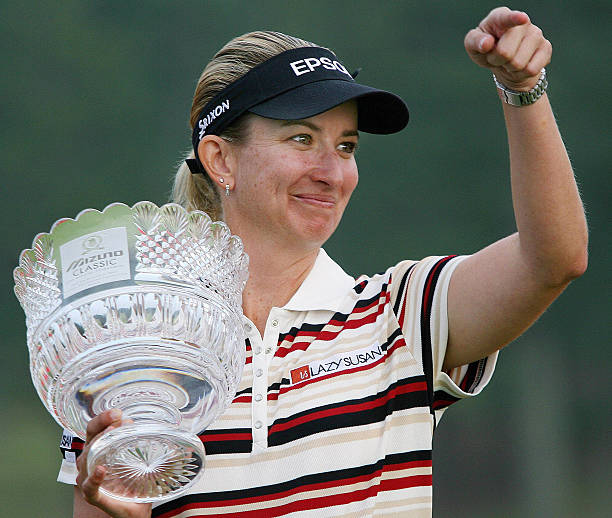The Australian Open's recent decision to revert to separate men's and women's tournaments has sparked significant discussion within the golf community. This change comes after three years of hosting mixed-gender events, a format that faced criticism from several prominent players.
Cameron Smith, a leading Australian golfer, was vocal about his concerns, stating that the combined format led to suboptimal course conditions and diminished the tournament's prestige. He emphasised the need for a return to traditional setups to maintain the event's integrity. Similarly, Hannah Green, an LPGA Tour star, pointed out that accommodating both men's and women's competitions led to "generous" pin placements, affecting the tournament's competitive nature.
In response to these critiques, Golf Australia CEO James Sutherland acknowledged the feedback and announced the decision to separate the events. He expressed confidence that both championships would thrive independently, aligning with the organisation's strategy to enhance the profile of these tournaments. This move has been welcomed by many in the golf community, who believe it will restore the Australian Open's status and attract a higher calibre of participants.

Image - Australia's most successful golfer, Karrie Webb
Increased Visibility and Sponsorship Opportunities
A dual-gender tournament attracts greater media coverage, leading to higher viewership numbers for both competitions. Expanded exposure enhances sponsorship opportunities, resulting in increased financial backing for players and events. Brands seeking association with progressive sporting events are more likely to invest, contributing to the long-term sustainability of women’s professional golf.
Moreover, the increased attention produces critical exposure for younger players, inspiring the next generation of talent to pursue careers in golf and strengthening the sport’s overall appeal. Media outlets, broadcasters and digital platforms also benefit from this format, as a broader audience engages with the sport through expanded coverage and storytelling.
Competitive Depth and Player Development
Shared tournament conditions with the men’s competition offer women golfers opportunities to compete under similar challenges. Exposure to tougher course conditions and elite-level competition strengthens player development while enhancing competitive conditions raises overall standards and contributes to the global advancement of women’s golf.
Meanwhile, access to high-profile venues promotes improved technical skills, allowing female golfers to refine their abilities against world-class competitors while benefiting from an enriched tournament experience. The undertaking of competing alongside male players in the same environment can also provide a motivational boost, driving improvements in both technique and strategy.
Subtle Changes with Major Implications
The structure of professional golf events has long followed traditional frameworks. Adjustments to these formats position the sport for a more inclusive and commercially viable future, with innovations in tournament structure enhancing marketability and providing fresh revenue streams. This strengthens the sport’s global presence. Meanwhile, integrating aspects that appeal to modern audiences, including digital engagement and interactive betting options for those looking to place bets on AU online gambling sites, aligns golf with evolving consumer trends.
Meanwhile, technological advancements such as data analytics and fan-driven content contribute to the modernisation of women’s golf, stimulating sustained growth and increased global recognition. As the demand for innovation grows, further adaptations in broadcasting, fan interaction and digital engagement may become standard practise.
Fan Engagement and Growth of the Sport
A unified tournament creates a more engaging experience for spectators, attracting a broader demographic of golf fans. Events featuring both men’s and women’s competitions promote the sport’s inclusivity, inspiring a new generation of players. Here, families and aspiring golfers attending the tournament are exposed to a diverse range of playing styles, boosting interest and participation in women’s golf.
Meanwhile, increased fan involvement through interactive media, live streaming and digital platforms enhances the tournament experience, drawing more viewers and generating long-term support for the women’s game. Here, the availability of behind-the-scenes content, player interviews and real-time engagement options further strengthens the connection between fans and the sport.
Economic and Logistical Advantages
Hosting both competitions simultaneously provides cost efficiencies for organisers, sponsors and broadcasters: shared infrastructure, staffing and marketing efforts streamline operations while delivering a world-class tournament experience. The financial benefits of this approach could lead to similar formats being adopted by other major golf events worldwide.
In tandem, ticket sales, sponsorship packages and broadcasting rights become more lucrative, strengthening the financial viability of women’s golf as a commercially attractive investment for stakeholders across the industry. Additionally, governments and local economies benefit from increased tourism and hospitality revenues generated by larger and more diverse audiences attending tournaments.
Potential Influence on Other Tours
The success of this format in Australia may encourage other international tours to adopt similar models. If proven viable, it could influence the scheduling and organisation of major championships and leading golf circuits. The introduction of mixed events or back-to-back tournaments with equal prize funds could become a defining feature of the sport’s evolution.
Increased collaboration between golf associations worldwide may lead to a broader restructuring of professional golf calendars, reinforcing the importance of gender parity in the sport’s development. A global shift towards equal representation in major tournaments would also inspire younger generations and aspiring professionals, further diversifying the competitive landscape of the sport.
The Future of Women's Golf
Women's golf has traditionally been underrepresented; however, this new format paves the way for structural changes that benefit women’s golf beyond financial equality—higher levels of exposure, improved playing conditions and increased sponsorship investment contribute to a stronger professional terrain. The Australian Open’s approach may serve as a blueprint for future tournaments, shaping the sport’s trajectory for years to come.
Ultimately, greater emphasis on accessibility and talent development strengthens the sport’s infrastructure, providing long-term benefits that elevate women’s golf to unprecedented levels of global prominence and influence. As the topography transitions, continued investment and innovation in women’s golf will drive sustained growth, further solidifying its position within the global sporting industry.
Article by - Charlon Muscat

